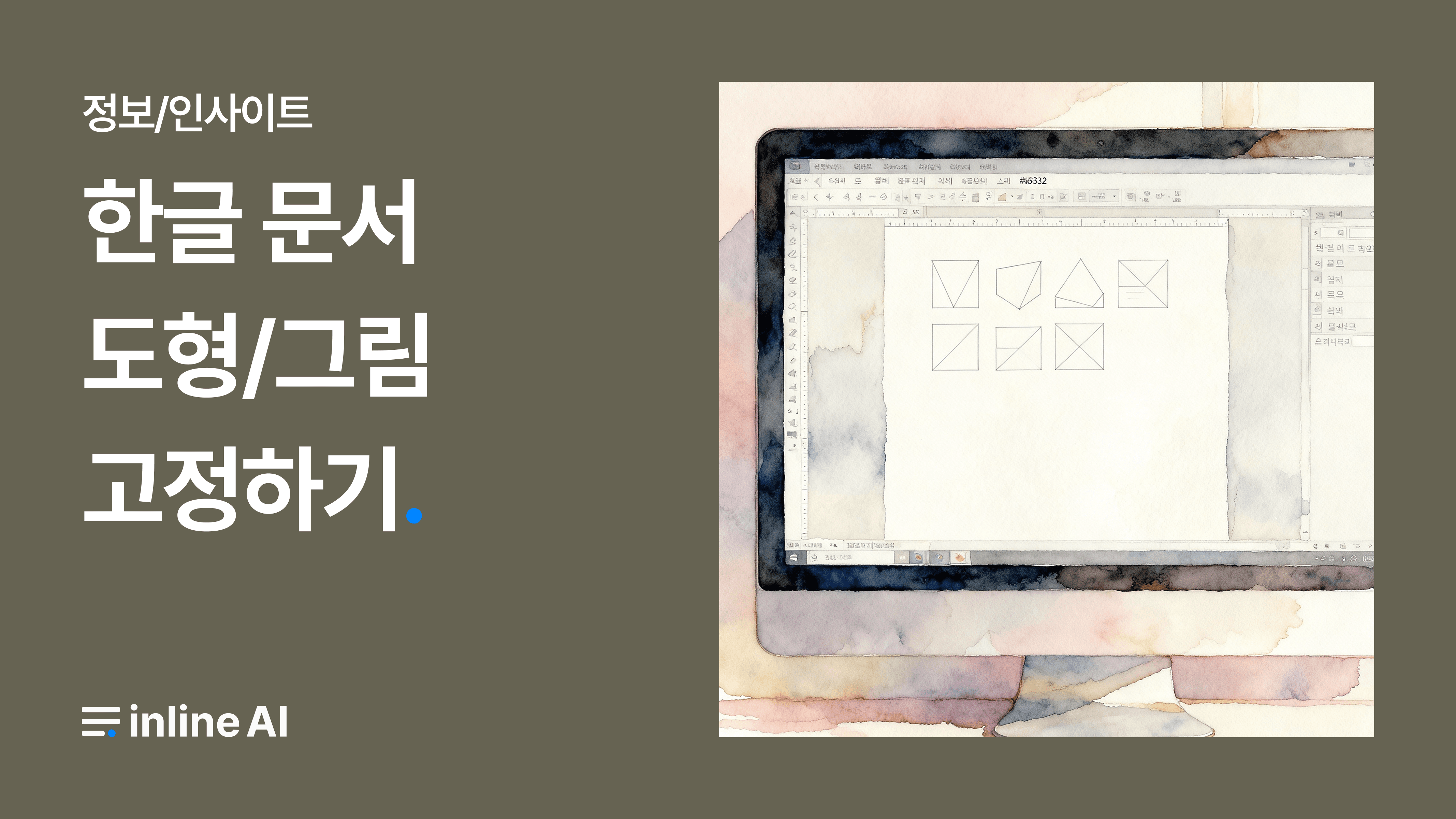When editing a Hangul file, there are often times when you need to use images.
However, simply inserting them might not position them as desired, or you may have difficulty finding editing features such as rotation or cropping.
An even more frustrating moment is when an image that you carefully inserted suddenly disappears.
This article covers the basics of handling images in Hangul, as well as the essential editing features needed in practice.
We will guide you through inserting, rotating, cropping, layering, adjusting transparency, and solving the issue of disappearing images without panic.
By reading this article alone, you can avoid wasting more time on image editing.
Mastering the Basic Methods of Inserting Images in Hangul
How to Insert Images into Hangul Files
Select [Insert] → [Image] from the top menu.

Choose the image file (PNG, JPG, etc.) to load and insert.
💡 Tip. When inserting images, it's good to select the options “Integrate into Document” and “Treat as Character.”
Integrate into Document: This feature directly saves the image file within the document, and it must be checked.
Treat as Character: This treats the image as an element of the text so that it remains fixed at its position even when the document content is modified or added.

Since the inserted image is typically positioned in line with text, positional adjustment may be required as needed.
Adjusting Image Size and Position
When you click on an image, adjustment points appear on its border, allowing you to drag to reduce or enlarge its size.
If you wish to make fine adjustments, you can select the image and directly input desired values in the [Object Properties] → [Size] menu.

Stabilizing Layout Through Text Arrangement
When an image is placed within a paragraph, the text might be pushed into an awkward position.
In such cases, selecting the image and utilizing the “Text in Front/Text in Back” options under [Object Properties] → [Arrange with Text] will help organize the layout stably.

Comprehensive Guide to Image Editing Functions in Hangul Files
Rotating Images in Hangul Documents
After selecting the image, free rotation can be performed from the top menu [Image] → [Rotate/Flip].

The “Input Angle” feature allows you to rotate the image to specific angles such as 15°, 90°, etc.
💡 Tip. Occasionally, the rotation menu may be disabled. To enable the rotation menu, you must uncheck the [Treat as Character] option under the [Image] tab.


Cropping Image Files
Select the image and click [Image] → [Photo Editing] → [Crop] from the top menu.
Drag the desired area to crop it out, which will neatly remove any unnecessary parts.
💡Tip. Clicking the image and dragging the edge inward while holding the Shift key instantly executes the crop mode.
Layering Image Files in Hangul
Select the desired image from [Insert] → [Image] in the top menu to load it.
Verify the release of each image's treatment as a character option.
After selecting the image, adjust the position under [Object Properties] → [Location] → [Arrange with Text].
Third Text in Front: Arrange the image to layer over text
Fourth Text in Back: Arrange the image behind text

💡 Tip. If you want to move layered images simultaneously, utilize the “Group Objects” feature.
Hold the Shift key and select all overlapping objects, then right-click → Group → Group Objects
Adjusting Image Transparency in Hangul
Select the image → [Object Properties] → [Image] → [Transparency Effect] menu to adjust transparency.

Transparency can be used to add background images or watermarks naturally.
Solutions for Image Issues: How to Handle Disappearing Images in Hangul
When images appear to have vanished in Hangul, it is most often a layer issue or a viewing settings issue.
Checking Image Viewing Options
Verify that the option [View] → [Show Images] is checked from the top menu.


Resetting Environment Settings
If the previous method does not resolve the issue, resetting the environment settings might.
Open Windows Explorer and navigate to the path below. (Accurate numbers vary by version.)

Run HConfig90.exe inside the HncUtils folder. (The number varies per version.)

Hancom's default settings can only be executed when Hangul is off.
Click [Set to Default].

Verifying Document Security Settings
Click [Security] from the top menu, then select [Document Security Settings] from the opened menu.

Check the security level to [Low], then click [Settings] on the right to apply changes and restart the Hangul file.

Edit Images in Hangul More Conveniently
Inserting and editing images in Hangul showcases its true potential when you use rotation, cropping, layering, and transparency adjustment beyond simple insertion.
Additionally, knowing how to resolve image disappearance during work can significantly boost your work efficiency.
Furthermore, repetitive and time-consuming Hangul document tasks can be handled much more smartly by leveraging Inline AI specialized for Hangul documents.
Inline AI is optimized for the Hangul environment and supports document generation and editing in one sweep, including drafting, automatic summarizing, spell correction, and table creation.
Detailed tasks like image insertion and layout adjustment can be quickly completed with the aid of AI, greatly enhancing the completeness of document work.
🚀 For a more efficient Hangul editing experience: Experience Inline AI
Try smart Hangul editing right now!










